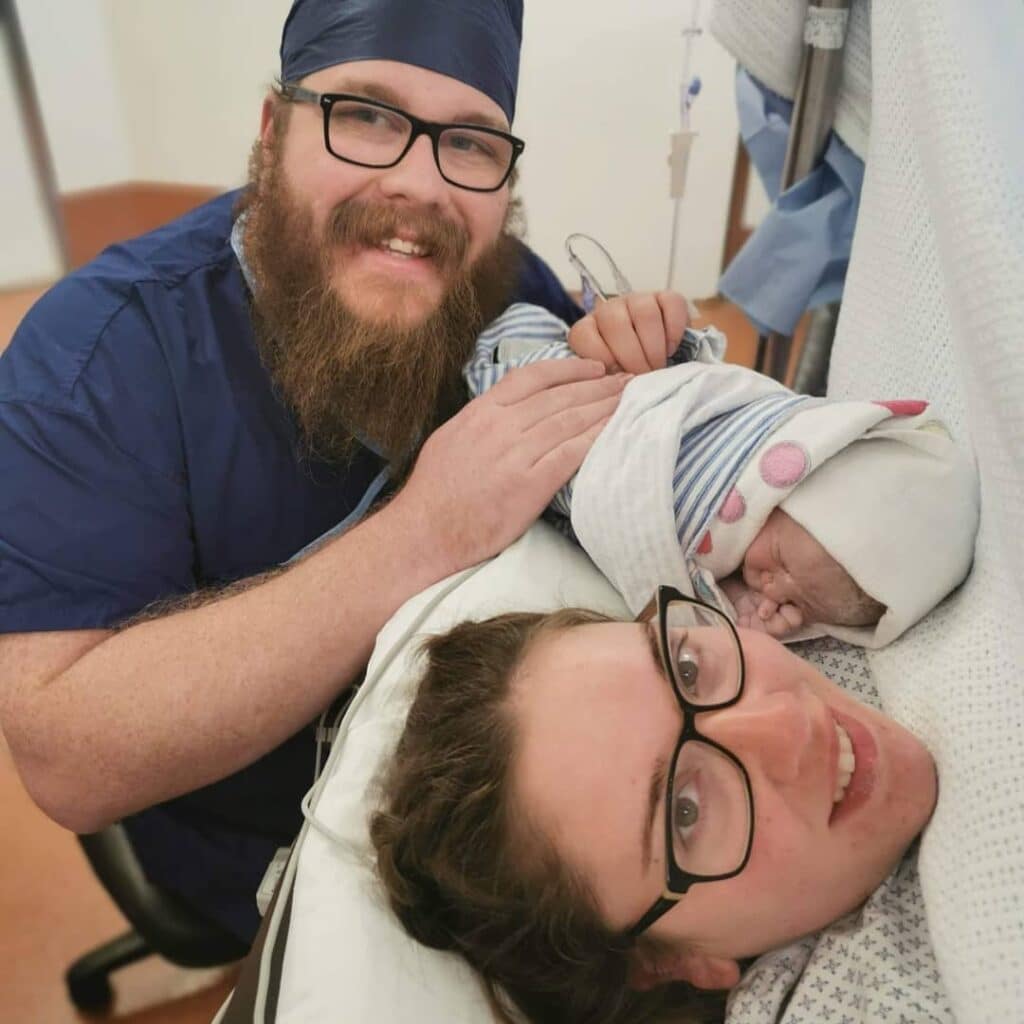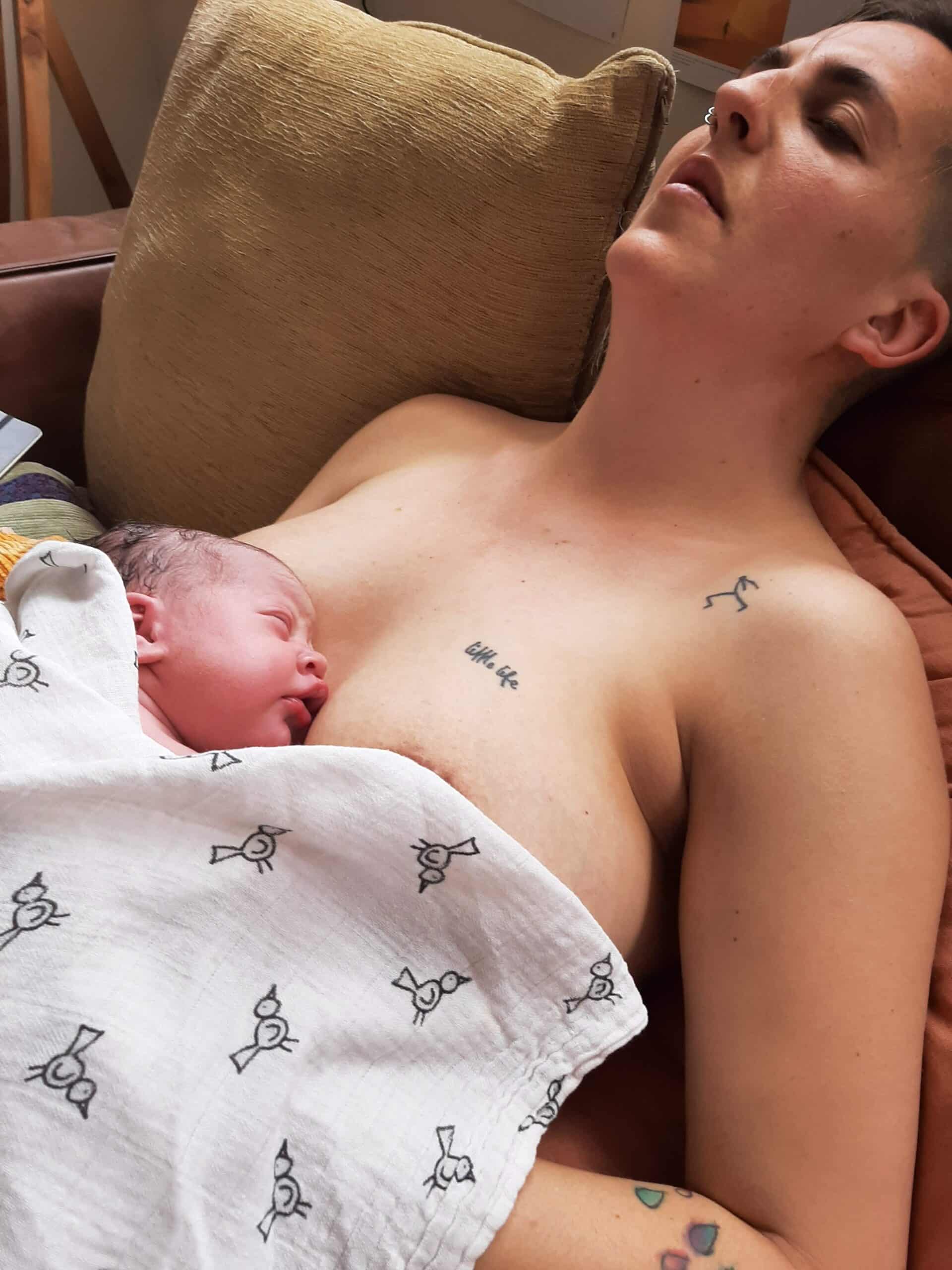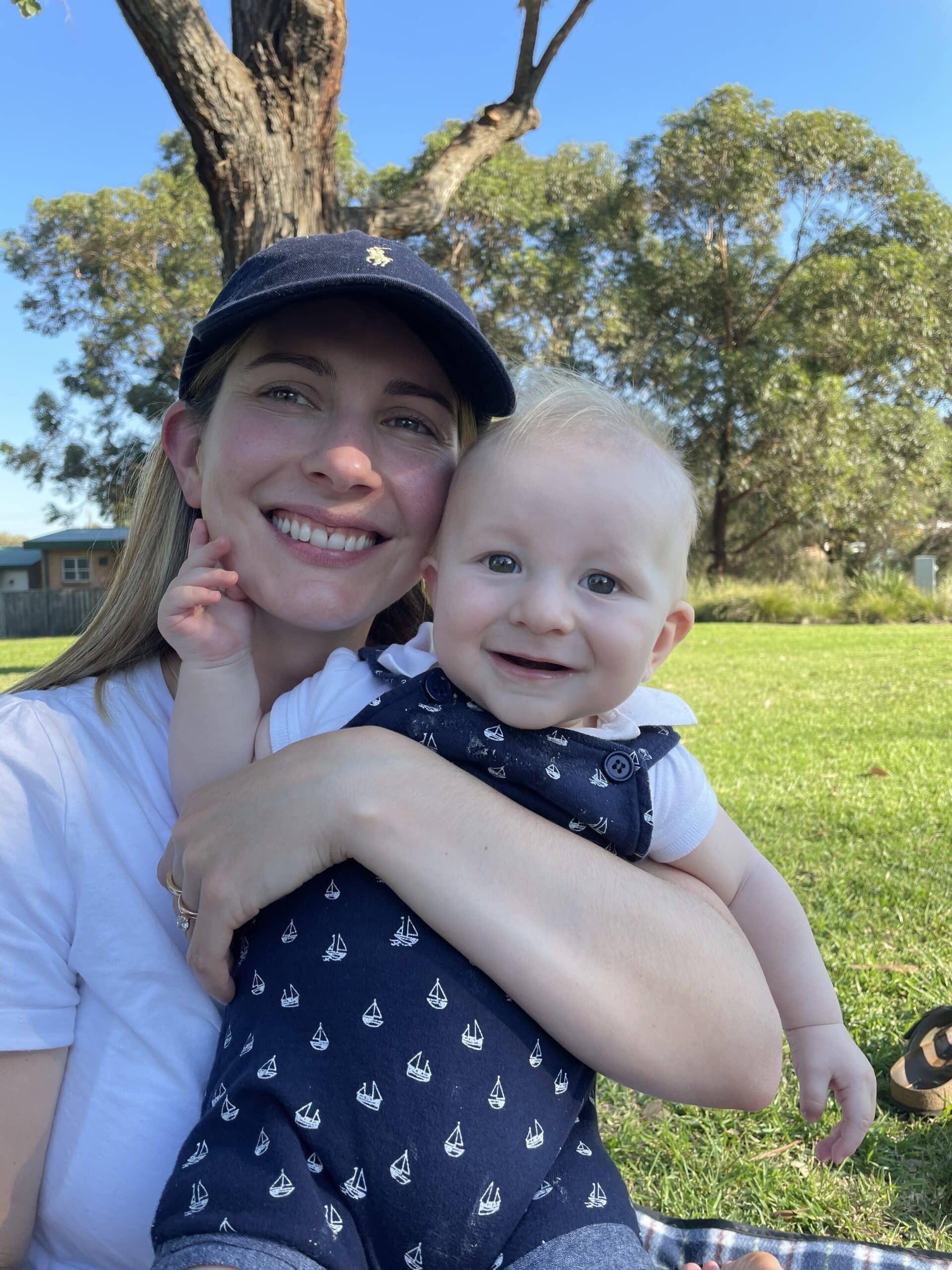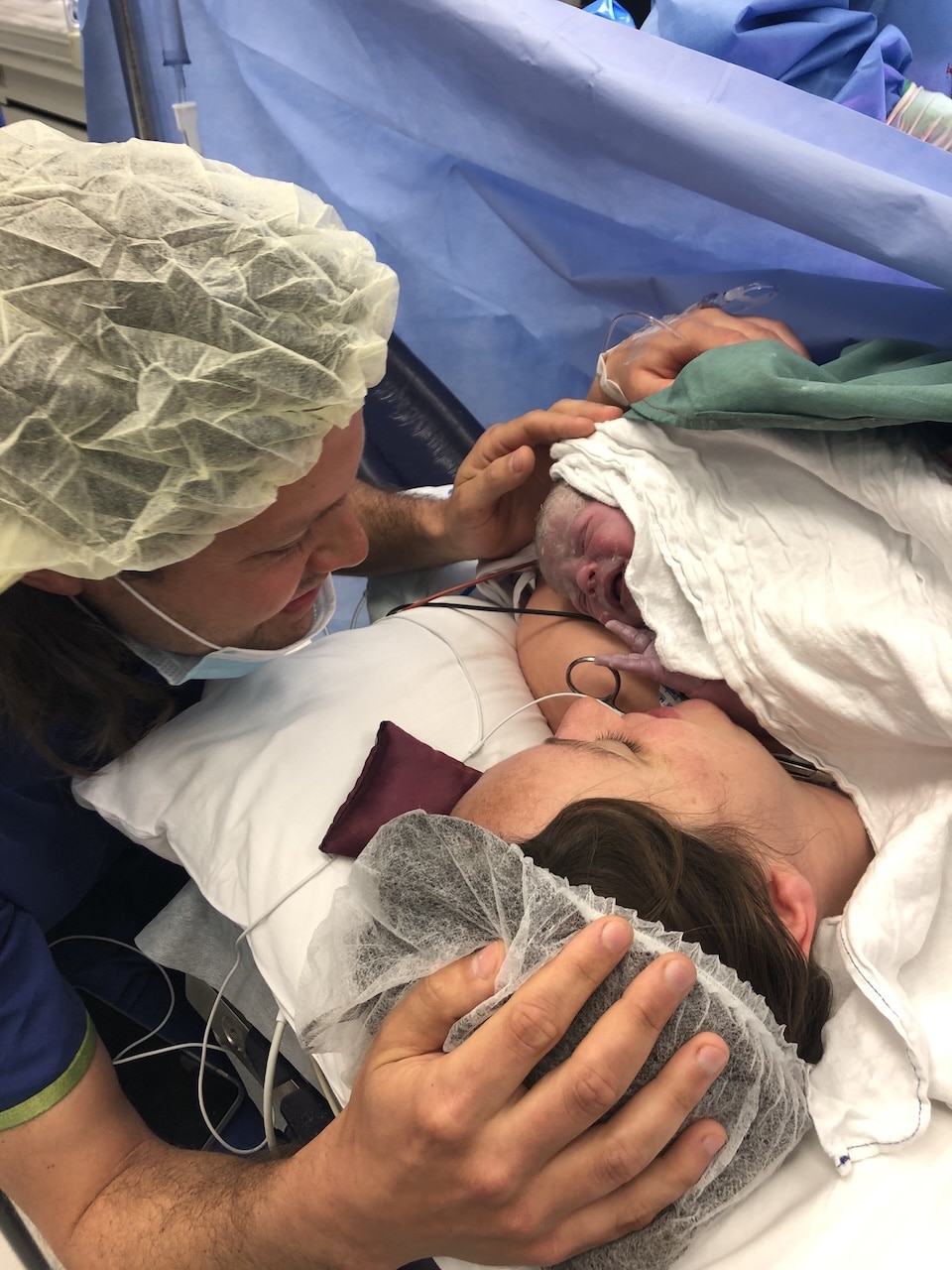Podcasts Gemm
EPISODE 313
Gemm

When Gemma was 16 she took herself to her GP as she suspected her vagina was somehow different. As a swimmer she had always used tampons yet she would always bleed through them. Within minutes of assessing her, the GP confirmed that she had a vaginal septum and two cervix’. An ultrasound at a later date confirmed that she also had two uteruses. She was told that falling pregnant wasn’t necessarily going to be an issue but carrying a pregnancy to full term may be challenging.
In her first pregnancy she was immediately classed as high risk and put under the care of an obstetrician in her local public hospital. She had regular ultrasounds to monitor for intrauterine growth restriction from 28 weeks onward.
“Most people with my condition have caesarean births, mainly due to growth restriction or breech presentation. The obstetricians weren’t sure how the cervix would dilate on each side and they did have questions about whether the uterus would contract uniformly and actually be able to push the baby out. There were a lot of variables but they kept an open mind in both pregnancies.
“I really was intent on having a vaginal birth and I was quite disappointed when I was told that I couldn’t attempt it. I was 28 weeks when they did the first growth scan and Max was breech from then on. From that scan they also noticed I had low fluid levels but the obstetric team weren’t too concerned. At 37+4 they started to show concern for the fluid levels so they booked me in for a caesarean the next day.”
Gemma’s partner is a medical technician, works in operating theatres and has witnessed many caesareans. He was a grounding support for Gemma as he talked her through the whole process and prepared her for the experience. That said, she admits she was anxious.
“It was nice to walk down to the theatre and it was really calm and controlled. After the spinal was in, they lay me down and Max was born soon after. I wanted to have skin to skin as soon as possible, they tucked him under my gown and I was able to hold him for twenty minutes while they stitched me up. Once I was in recovery the midwives helped me attach him and he fed there. He was a lazy latcher as he was only 37 weeks and I didn’t get quite as much support in hospital as I expected to. We went home and I was still syringe feeding and when the child nurse came out they noticed he was jaundiced and had lost weight so they encouraged me to syringe feed and formula feed. A week later I saw a lactation consultant and she saved our breastfeeding journey.
“When Max was 18 months I made an appointment to have my vaginal septum removed. It’s exactly like your nose that divides the two nostrils. It was a lot more painful than I anticipated and I actually needed longer than six weeks to feel recovered and pain-free. Max was in the left uterus and Otto was in the right and one specialist made a comment that it would have been better to have both in the left as we knew that the left uterus worked. I really hoped I would have a VBAC but my amniotic fluid level dropped again and they took it a lot more seriously this time. Low fluid level correlates with late-term stillbirth and subsequently I was at the hospital every three days for scans and monitoring.
“At my last scan the fluid was really low and the doppler reading wasn’t favourable so they sent me straight to maternity and I was monitored overnight before my caesarean the next day. I was grateful to be there and know that if anything was wrong, they would take me to the theatre straightaway. Otto came out screaming but my pain was so much worse; it was surgical incision pain and I took all the pain medication they would give me for that first week after birth.”
Topics Discussed
Low amniotic fuid, Postnatal anxiety, Two planned caesareans, Uterus didelphys
Episode Sponsor
Bonds Baby Cover is a comprehensive ‘poo-licy’ for new parents that compensates parents for the first-time parent experience with free Bonds babywear. There’s cover for ‘natural disaster’ we’re talking grade 5 Poonamis here, ‘Vandalism’ – wilful texta damage to walls and clothing – and ‘Third Party for when ‘it’ goes everywhere and on everyone. Even accidental-probably-on-purpose damage is covered. If my three boys are proof, little cuties can be massive liabilities. Parents simply sign up to make a claim and be compensated with Bonds Babywear. To be clear, that’s free product, parentals! To sign yourself up head to BONDS
Today’s episode is brought to you by Kiwi.co I must confess I’m not much of a crafty mum. If your daily routine involves taking care of a little one (or two), why not switch things up with a Panda Crate box from KiwiCo? Panda Crate is a subscription box filled with playful, open-ended activities backed by research and designed especially for naturally curious and creative babies and toddlers. With a Panda Crate subscription from KiwiCo, your baby receives a new crate filled with two-months’ worth of products and content every other month! Whether you have a brand-new newborn or a trailblazing toddler, the Panda Crate is perfect for your little one’s developing brain. Build a foundation for early learning this new year with Panda Crate from KiwiCo! Get 30% off your first month with code BIRTHSTORIES at kiwico.com. That’s 30% off your first month at Kiwi.co promo code BIRTHSTORIES
Categories
Related Products
-
Birth Meditations
$49.00Narrated by Sophie Walker, these soothing and informative meditations help you feel supported and confident around birth.
Join the conversation
Sign up to get the latest updates, freebies, podcast releases straight into your inbox
@AustralianBirthStories
Follow along with us
@AustralianBirthStories
Follow along with us
@AustralianBirthStories
Follow along with us
@AustralianBirthStories
Follow along with us
@AustralianBirthStories
Follow along with us
@AustralianBirthStories
Follow along with us
@AustralianBirthStories
Follow along with us
@AustralianBirthStories
Follow along with us
@AustralianBirthStories
Follow along with us
@AustralianBirthStories
Follow along with us
@AustralianBirthStories
Follow along with us
@AustralianBirthStories
Follow along with us






